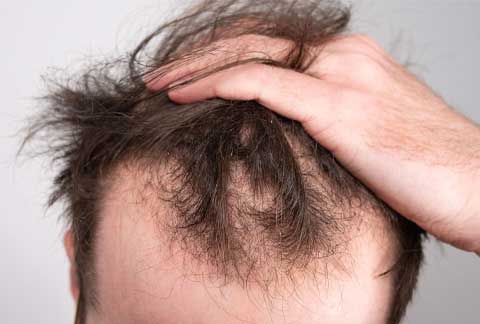+91 8275066599
Book an Appointment
info@myaesthetic.in
Book an Appointment
3/26,27, Gokhale Nagar Road
Pune - 411016, MH, India
Male Hair Loss Condition
-
Definition
Male pattern baldness is the most common type of hair loss in men.
Alternative Names
Alopecia in men; Baldness - male; Hair loss in men; Androgenetic alopecia

-
Causes
Male pattern baldness is related to your genes and male sex hormones. It usually follows a pattern of receding hairline and hair thinning on the crown.
Each strand of hair sits in a tiny hole (cavity) in the skin called a follicle. Generally, baldness occurs when the hair follicle shrinks over time, resulting in shorter and finer hair. Eventually, the follicle does not grow new hair. The follicles remain alive, which suggests that it is still possible to grow new hair.
Symptoms
The typical pattern of male baldness begins at the hairline. The hairline gradually moves backward (recedes) and forms an "M" shape. A circular area on the back of the head (vertex) often thins and expands in size over time. Eventually the hair becomes finer, shorter, and thinner, and creates a U-shaped (or horseshoe) pattern of hair around the sides of the head and a bald area on the back of the head.
Exams and Tests
Classic male pattern baldness is usually diagnosed based on the appearance and pattern of the hair loss.
Hair loss may be due to other conditions. This may be true if hair loss occurs in patches, you shed a lot of hair, your hair breaks, or you have hair loss along with redness, scaling, pus, or pain.
A skin biopsy, blood tests, or other procedures may be needed to diagnose other disorders that cause hair loss.
Hair analysis is not accurate for diagnosing hair loss due to nutritional or similar disorders. But it may reveal substances such as arsenic or lead.
Treatment

